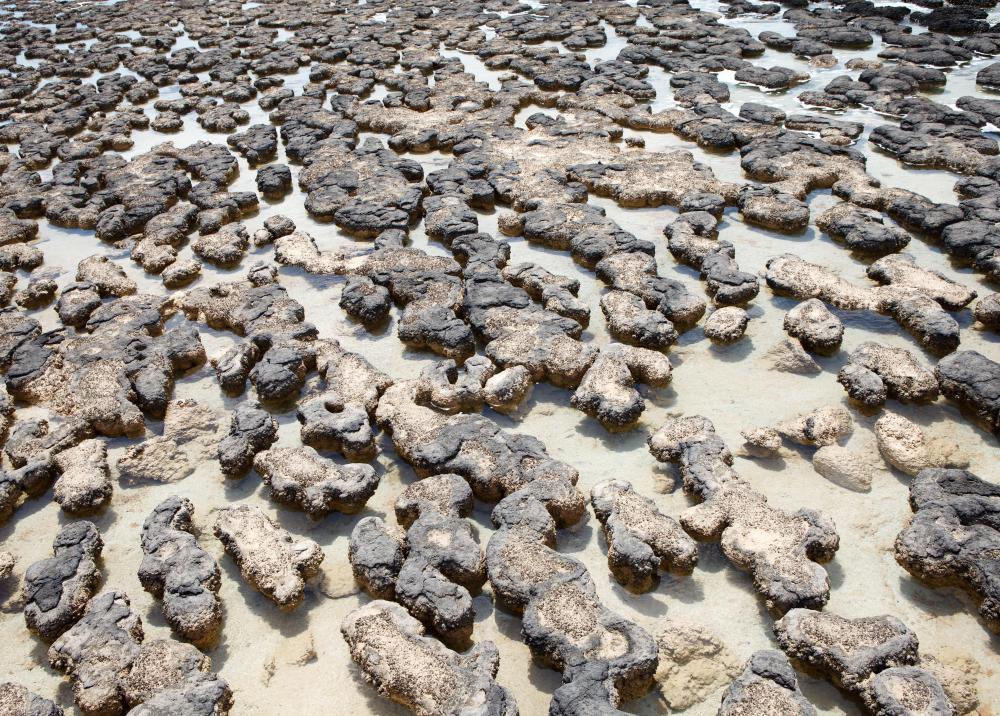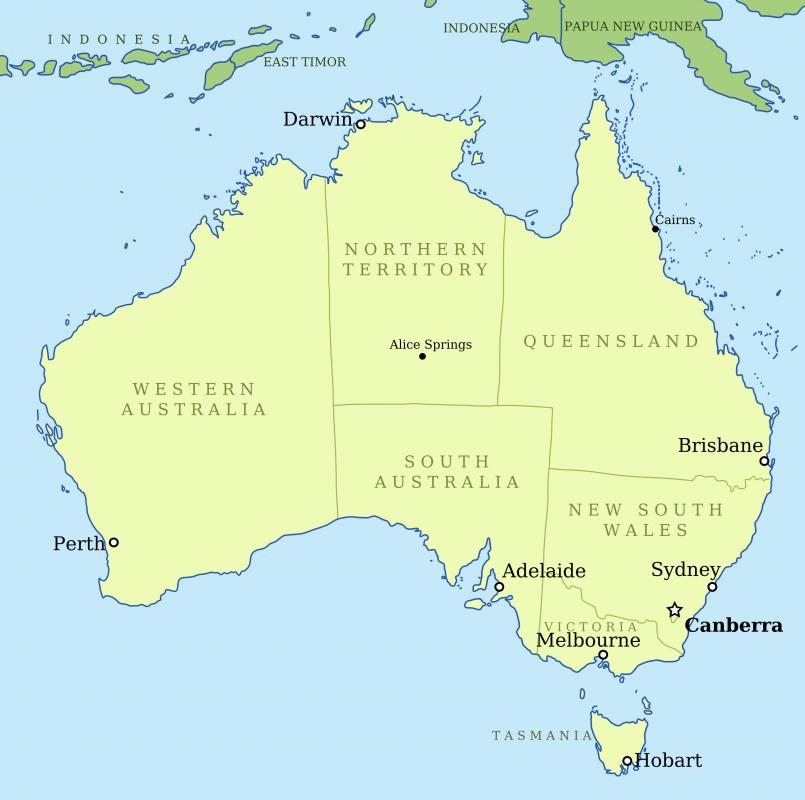What are Stromatolites?
 Mary McMahon
Mary McMahon
Stromatolites are among the world's oldest fossils, some of which are over 3.5 billion years old. Stromatolites are structures formed by huge colonies of cyanobacteria, formerly called blue green algae, which contributed directly to the formation of the Earth's atmosphere and its currently habitable state. In addition to existing in fossilized form, a colony of living stromatolites was discovered in Australia in 1956. Visitors to the Shark Bay World Heritage Area can marvel at the archaic organisms, which live in the highly saline environment of Hamelin Pool.
Stromatolites are formed by prokaryotic cyanobacteria, which have cells lacking a distinct nucleus. Prokaryotic bacteria are considered by some scientists to be the oldest and most primitive life form on Earth, with a well established fossil record stretching back for millions of years. The cyanobacteria which dominate stromatolites process many of the building blocks of life, including oxygen, carbon, and nitrogen.

Prokaryotic bacteria form an important part of the world's biomass today, especially in the oceans. These bacteria thrive in extreme environments due to their relative lack of complexity. They are also very susceptible to being overwhelmed by more complex organisms, and are therefore often found in areas which other organisms cannot survive, or paired with other, more hardy forms of life. Because they play an important role in reducing carbon dioxide levels and emitting oxygen in exchange, many scientists have urged more research on these bacteria.

Stromatolites were called “living rocks” by scientists before their exact makeup was understood, and they do resemble rocks, growing to well over three feet (one meter) high and being almost as wide. From a distance, a colony of stromatolites can look like a series of boulders scattered across the beach. However, stromatolites are actually laminar structures composed of many layers of material accumulated by the cyanobacteria that make up the stromatolite colony. In fossilized form, stromatolites have distinctive bands of material which are quite striking.
The colonies of cyanobacteria and accompanying algae tend to collect particles which accumulate in layers, creating a striated formation. Because stromatolites take so long to develop, a reasonably sized specimen can represent thousands of years of growth. The photosynthesizing powerhouses can be found in fossilized form all over the world, indicating that they played a tremendous role in making the Earth a hospitable environment for other forms of life.
AS FEATURED ON:
AS FEATURED ON:












Discussion Comments
I have a stromatolite that a friend brought me from a vacation, and you are exactly right Talentryto. They are interesting to look at, and have a lot natural patterns and layers from weather and time.
I enjoy looking for fossils, but have never seen stromatolites in person. I've heard they look like rocks, until you see them up close. Up close you can see the layers of sediments and deposits that are basically a reflection of millions of years of history.
Post your comments